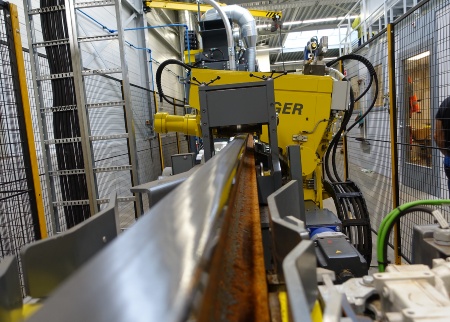Come prepared with guaranteed quality!

Since 1 July 2016, railway operator ProRail has required the use of milled rails in the construction of tracks. In order to meet this obligation, we purchased a milling machine specifically tailored for this purpose. After making this investment we have been able to optimise our production process on a continuous basis. As a result, we can preventatively mill long welded rails of no less than 360 metres long, and build it in the track immediately afterwards. And what’s more, as from now on we are even capable of delivering step rails at custom-made heights!